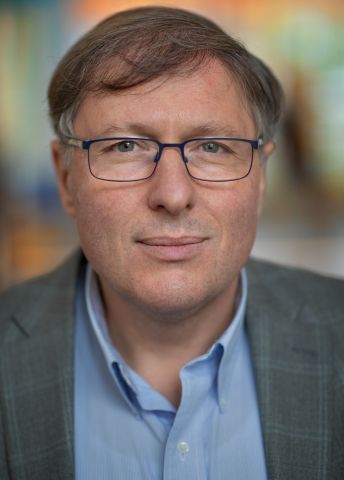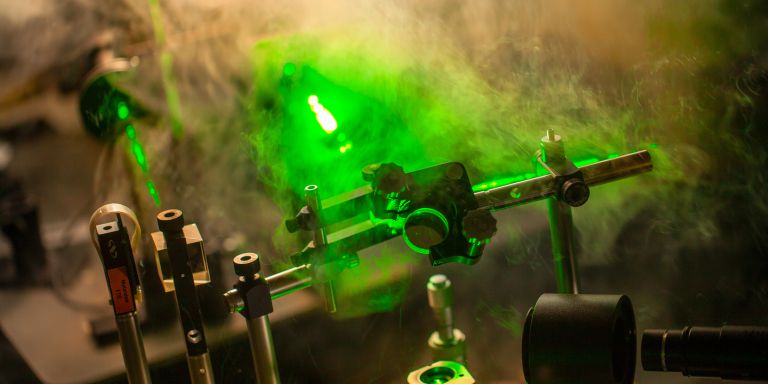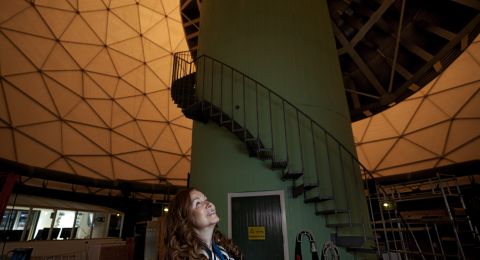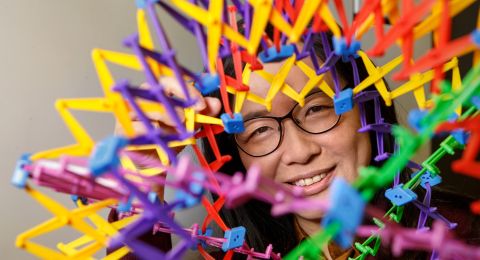Some materials are stable; others disintegrate spontaneously. Between them may be found metastable materials, on which relatively little research has been carried out. Wallenberg Scholar Igor Abrikosov is attempting to understand and ultimately control them. This may pave the way for materials possessing entirely new properties.
Igor Abrikosov
Professor of Theoretical Physics
Wallenberg Scholar
Institution:
Linköping University
Research field:
Materials science, metastable materials, quantum mechanics, theoretical simulations
Metastable materials are actually not uncommon. One example is diamond, which is the metastable form of carbon. At normal temperature and pressure, the stable form of carbon is graphite. Abrikosov, who is Professor of Theoretical Physics at Linköping University, explains that each element or compound can be seen as a ball on a slope. If the ball is allowed to do what is natural, it will roll down to the bottom of the slope – to the stable form, which requires least energy.
But if the substance is exposed to unusual conditions, it may be likened to a ball rolling into a hollow on the slope; if the hollow is deep enough, the ball may stay there. Diamond is one example. Diamonds cannot form naturally at normal pressure – only deep underground where the pressure is much higher. But once they have formed, they retain their metastable form, and do not revert to graphite even if the pressure changes.
“So, some metastable materials can exist and function even if the same element or compound can also exist in other phases that are more preferable in energy terms,” Abrikosov explains.
He wants to figure out why this happens, so he can control and hence design metastable materials. They could be stronger, lighter and possess electronic properties, for instance – exceeding those of materials currently available.
A multitude of new materials
“Working out where metastable phases are to be found remains an unresolved challenge for research. I’m planning to develop a theory to understand how to find the phase, and ways to synthesize the materials.”
But to formulate a good theory you need plenty of facts. Abrikosov is gathering facts on metastability in collaboration with experimentalists at Bayreuth University in Germany, who are performing experiments under extremely high pressure. They are subjecting various elements and compounds to a pressure equivalent to many millions of atmospheres, mimicking the process that transforms graphite into diamonds. Some of the metastable materials formed in this way disintegrate immediately the pressure is reduced; others remain and can be analyzed.
“My colleagues are now synthesizing a new material every week, which is astonishing. I’m not a gambler – I don’t enjoy it – but right now I feel like I’m standing in front of a slot machine and winning the jackpot time and time again. New materials just keep tumbling out…”
Some of them possess useful properties. Abrikosov and his fellow researchers recently had an article published in Nature Communications, one of the world’s most highly regarded scientific journals, describing how they managed to synthesize an ultrahard metastable variant of the compound rhenium nitride.
But as far as Abrikosov is concerned, the most important thing right now is not to synthesize materials with promising properties. He wants access to large quantities of experimental data that will help him formulate the theory, work out what it is that enables the material to survive at normal pressure.
“You might say that I want to know how you tilt the slope backwards, and still let the hollow that the ball is laying in remain a hollow. Up to now, only nature had been able to do this – now we have also succeeded. I want to create a firm theoretical foundation for this discovery.
Simulations speeding up development of materials
Once he has formulated the theory, Abrikosov plans to use it for simulations as a step toward synthesizing new materials. At present, discovering new materials is often a matter of trial and error – elements and compounds are combined and treated in various ways before their properties are tested. This is very time-consuming. From discovery to a finished material can take up to twenty years. Abrikosov wants to use simulations based on good theory to cut this down to five, maybe six, years.
“Being chosen as a Wallenberg Scholar is a fantastic feeling. I’m truly grateful for the recognition. I also very much appreciate the targeted, long-term funding, which enables me to carry out research that would have been impossible otherwise.”
His interest in physics was kindled when he was very young. Sometimes his mother, who was a physics teacher, could not arrange a babysitter, so she took him to work with her. Igor sat amidst lab equipment and listened to her explaining things to her students. He gradually began to realize that he wanted to be a physicist. He studied in Moscow and came to Sweden in 1993 for a postdoc.
Phase stability has been his research field throughout. He says that these days his interest is primarily in “application-inspired” theoretical research. This means that, as a theoretician, he is making up ideas from experimentalists or from industrial partners.
“It’s much more interesting than making up ideas from inside my own head. By placing their problems in my theoretical framework and finding a solution, a new theory or a tool, I ensure that the issue is of interest to the research community as a whole. This enables us to create entirely new opportunities in the field of materials science. It’s really exciting.”
Text Lisa Kirsebom
Translation Maxwell Arding
Photo Magnus Bergström






